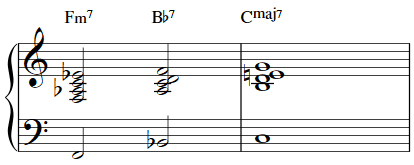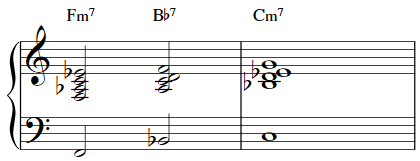Creating Funky Chord Resolutions

In this article we'll talk about creating funky chord resolutions. What do I mean by that? Well, a trademark of jazz-funk music is the harmony. Have you ever listened to a jazz-funk tune and thought "Wow, those chord changes sound really cool. But what are they?" Here we'll explore some chord resolutions that step slightly outside of the norm, helping to create those cool, shifty, unexpected chord progressions that we hear in lots of jazz-funk and funk-rock music.
Creating Funky Chord Resolutions Tip #1: It's Not Brain Surgery
One of the things that surprises students when we start discussing some of the cool and "advanced" chord progressions is that these progressions all start from a very simple place - usually, the "V to I" and "ii -V - I" chord progressions. So make sure you're pretty familiar with the standard "V to I" and "ii - V - I" chord progressions first, otherwise what follows might get confusing.
Creating Funky Chord Resolutions Tip #2: Deception is the Name of the Game
Part of what makes a particular chord progression sound "cool" or "different" is that it doesn't take you where you're expecting to go, but rather "surprises" you by arriving at some new, unexpected chord. These "deceptive resolutions" can help create suspense and excitement in music.
A great example of such a chord progression is referred to as the backdoor ii-V (or "backdoor turnaround"). The "backdoor ii-V" is a ii-V progression that does not resolve to its 'I' chord. Here's an example of a backdoor ii-V in the key of C major:
The idea starts simply: a "ii-V" progression, here F minor 7 to Bb7. Your ear is setup to expect a resolution to Eb major. But instead you get C major, and it sounds... well, it sounds pretty cool. How? Why?
To answer this let's examine the "ii-V-I" resolution that we might expect to hear:
As we look at the Eb major chord and compare it to the C major chord, we notice a couple common tones: the 'D' and 'G'. The 'Eb' and 'Bb' in the Eb major chord, however, become 'E' and 'B' naturals in the C major chord. So really, we're only changing a couple notes, and we're only changing those couple notes by half-steps. These slight changes allow your ear to hear the resolution as one that "works," but with enough new information to give your ear that deceptive, surprised sound.
Creating Funky Chord Resolutions Tip #3: The Backdoor ii-V Part 2
Piggy-backing off the backdoor ii-V above is the following resolution:
What's going on here is really just a variation of what we discussed above. Instead of resolving to Eb major 7, we resolve to its relative minor - which is C minor. As you can see, there are a lot of common tones between C minor 7 and Eb major 7. In fact, if you simply play an 'Eb' in the left hand in the above example, the right hand chord becomes an Eb major chord. Do you see how many possibilities exist? Changing just one or two notes can drastically alter the sound of your resolutions!

